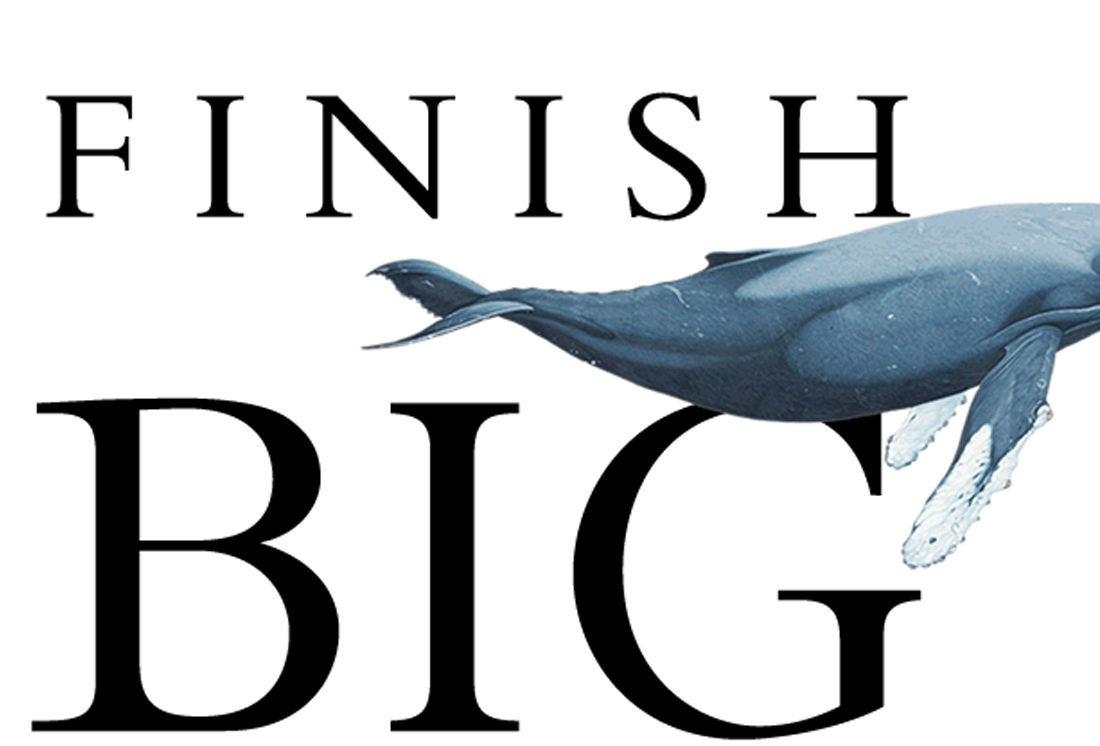
17 Apr Finishing Big with Bo Burlingham
 He started small, and is now finishing big. Business journalist and Inc. magazine Editor-at-Large, Bo Burlingham, first tackled the problem of business owners handling the pressure of trying to grow in Small Giants. His new book, Finish Big: How Great Entrepreneurs Exit their Companies on Top, addresses how and when business owners should start preparing for their exit.
He started small, and is now finishing big. Business journalist and Inc. magazine Editor-at-Large, Bo Burlingham, first tackled the problem of business owners handling the pressure of trying to grow in Small Giants. His new book, Finish Big: How Great Entrepreneurs Exit their Companies on Top, addresses how and when business owners should start preparing for their exit.
The tale of business sales is not always one with a happy ending. A U.S. Chamber of Commerce study found that only 20 percent of companies put up for sale are actually sold. Armed with more than 75 interviews of current and former business owners across various industries, Burlingham has written a book that could serve as a guide, for entrepreneurs, to achieving a happy final chapter.
Burlingham took the time to answer some questions for BusinessesForSale.com about his new book and how to exit a business well:
Q: Selling a business is a very emotional process. In your interviews with entrepreneurs, what was the best advice you came across for business owners who may have unrealistic expectations?
A: You’re right. It’s very difficult for owners to be objective about the value of their businesses, particularly companies that they’ve built from scratch. Their pride and their personal attachments to the people inevitably get in the way. As a result, most owners tend to think their businesses are worth much more than any buyer in the real world will pay, which can lead to disappointment and even tragedy when it comes time to sell.
The best advice I heard was to learn how private equity investors evaluate companies. They are the most objective buyers in the world because their livelihoods depend on making good investment decisions, and they get evaluated quarterly by their own investors who care only about one thing: maximizing their return on investment. I’m not saying you should sell to private equity fund. That’s a whole different discussion. But no matter whom you wind up selling to, you’ll get the best price—and the buyer will get the best value—if you’ve built a company that a private equity investor would pay top dollar for.
I should add that there are also tools available from many organizations—I name several in Finish Big—that can help you to evaluate your business objectively. Some of these tools you don’t even have to pay for, and they will give you great information about the areas of your business that you need to focus on if your goal is to maximize its value, which should, in fact, be your goal.
Q: The book stresses that business owners need to start preparing for their exit earlier than most people might expect. What kind of timeline do you present in the book for this type of planning and what do you recommend as the first steps for a business owner?
A: As I note in the book, there are actually four stages to the exit process: (1) exploratory; (2) strategic; (3) execution; and (4) transition. You can’t start too soon on the first stage—that is, figuring out the nature of the journey you are on (or planning to embark on) and how you would like it to end.
The second (strategic) stage begins as soon as you start building the business, whether you realize it or not. It’s about making sure your company has the qualities that will allow you to have the exit options you want when the time comes.
Starting at the third (execution) stage is extremely dangerous, although that’s what most owners do. They decide it’s time to sell and contact a broker or investment banker without having traversed stages one and two. That can lead to a lot of heartbreak.
The final stage, transition, requires the most preparation, and yet it’s also the stage that’s hardest to prepare for. How well you do in the transition stage will depend a great deal on what you’ve done in stages one through three.
As for a timeline, you should be aware that the entire process will take years, maybe even decades, if you want to have a good exit. The earlier you start thinking about your exit, the better off you’ll be. The vast majority of bad exits happen to owners who have tried to cram the process into a few months and to skip the first two stages. One person in Finish Big rushed it and exited his company in a few months—and then spent 15 years in anguish before he was able to move on.
Q: Who did you write this book for?
A: I wrote this book for anyone who owns a business or plans to start a business. If you have a business, you absolutely need to be aware of this stuff. That said, I think the experiences I write about are relevant to anyone who is coming to grips with the challenge of “moving on.”
Q: What has been the reaction to your book?
A: The reaction from readers and reviewers has been overwhelmingly positive. I’ve also heard from lots of people who say they wish they’d had it years ago. People don’t realize that leaving a business is much harder than starting one, and the stakes are much higher. After all, if your startup fails, you can always do another one—and many entrepreneurs do just that. But if you’ve spent 10, 20, 30 years building a business and then have a terrible exit, the consequences can be truly tragic.
Q: Apparently, there aren’t a lot of resources for people looking to learn about good exit strategy out there. How did you find this gap in advisory material, and how does Finish Big fill it?
A: I stumbled across the gap. I got interested in the exit process by watching a friend go through it. When I looked to see what had been written on it, I was shocked to find so little available compared to any other aspect of business. What’s more, almost all the books and articles on exiting a business have to do with the financial aspects of the process, that is, getting the most money for the company. That’s important, but the emotional challenges are far greater and far more difficult to deal with. I went out and started interviewing dozens and dozens of people who had sold businesses. I quickly discovered that a large percentage of them—half or more—were acutely unhappy. Some I’d describe as miserable. I asked myself, “What’s the difference between the people who are happy at the end of the process and those who are unhappy? What did the happy people do that the unhappy people didn’t do, and vice versa?” That’s how I came up with the seven (and a half) factors around which I structure the book.
For more information and to download a free chapter of Bo Burlingham’s book Finish Big, visit his website: boburlingham.com.
This article was contributed by BusinessesForSale.com, the market-leading directory of business opportunities from online media group Dynamis.

















